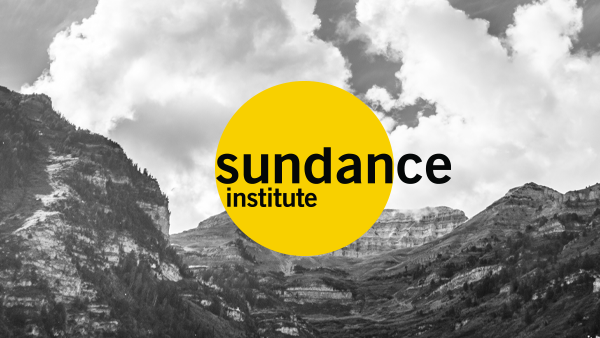Park City, UT – The 2010 Sundance Film Festival generated an overall economic impact of $62.7 million for the state of Utah, supported over 1,500 jobs, generated over $18 million in media exposure and provided millions in tax revenue, according to the annual economic and demographic study conducted by the University of Utah’s Bureau of Economic and Business Research at the David Eccles School of Business (BEBR). The nonprofit Sundance Institute announced the findings today, which were generated using an economic impact model known as RIMS II, developed by the U.S. Department of Commerce’s Bureau of Economic Analysis.
Since 1994, Sundance Institute has brought in excess of one-half a billion dollars in economic activity to the state of Utah through its annual Sundance Film Festival.
Governor Gary R. Herbert said, “By annually hosting our country’s preeminent film festival, Utah combines commerce and creativity to showcase our state’s vibrant economy, as well as its natural and cultural assets. In this difficult financial climate, it is encouraging that Sundance Institute continues to attract spending, employ workers, and stimulate the state’s economy. I am especially grateful to the thousands of volunteers who worked tirelessly to make the 10-day event such a terrific success.”
Through its films, panels, music events, and community and student programs, the Sundance Film Festival annually brings international exposure to an array of cultural, political, and social issues. The Festival inspires visits to Utah by leading CEOs, dignitaries, and cultural attachés and serves as a vital platform for business development. Each year, the State Department’s International Visitor Leadership Program brings filmmakers from around the world to the Sundance Film Festival, and The Open World Cultural Leaders Program, supported by the Open World Leadership Center at the Library of Congress, chooses the Festival to promote cross-cultural understanding through professional exchange.
Among the global business and cultural leaders traveling to Utah to attend the 2010 Festival were:
Bill Gates; George Soros; Nobel Laureate Muhammad Yunus; Education Reformer Geoffrey Canada; Earth Policy Institute President Lester R. Brown; Skoll Foundation Chairman Jeff Skoll; President’s Committee on the Arts and Humanities Executive Director Rachel Goslins; and Civil Rights Leader
Dr. Benjamin Chavis, Jr.
Economic Activity* in Utah for the 2010 Sundance Film Festival
$62.7 million
41,221 attendees
1,513 jobs supported
$3,329,776 in state tax revenue generated
Festival attendees spent $24,953,683 on accommodations
Festival attendees spent $10,573,149 on meals
Festival attendees spent $2,373, 950 on transportation
Festival attendees spent $6,911,768 on sports and recreation
Festival attendees spent $4,895,357 on discretionary items
*These figures do not include spending on airfare, private dinners, parties, and receptions held by the film industry, Festival sponsors, or other entities without
affiliation to Sundance Institute.
The 2010 Sundance Film Festival attracted an estimated 41,221 visitors, of which 60 percent (or 25,021) were from out of state or abroad. The largest share of nonresident attendees traveled from California, followed by Colorado, New York, Texas, and Florida. 77 percent of out of state visitors come to Utah via air.
Facts and Figures
While attendance was on par with the 2009 Festival, overall spending by 2010 Festival attendees was down compared to the previous year. The biggest decrease occurred in spending for accommodations which previously had reflected the greatest gains from year to year. Spending by nonresidents attending the 2010 Sundance Film Festival totaled $43,602,095 – also a decrease of 30 percent over the of $62 million spent during the 2009 Festival. This trend is consistent with national tourism spending data compiled by the U.S. Bureau of Economic Analysis: http://www.bea.gov/newsreleases/industry/tourism/2010/tour409.htm.
Media Exposure for the State of Utah
Each year over 1,200 print and broadcast journalists from approximately 30 countries travel to Utah to cover the Sundance Film Festival. The 2010 Festival generated media exposure for the state in excess of 12,600 print and online articles and over 1,400 broadcast stories with an estimated publicity value of $18,567,650.
Additional exposure for Utah was generated by the Sundance Film Festival’s online properties and printed materials. The Festival’s website attracted 9.8 million page views and 1.8 million unique visitors. Additional online exposure came from 125,000 Facebook friends; 17,000 Twitter followers; 87,000 video views on YouTube; and through a new Festival iPhone application.
The 2010 Sundance Film Festival program guide and catalog were distributed to over 67,000 people from 136 countries through the mail at official Festival venues, information booths, and retail stores. A new, four-color glossy publication, Inside Sundance Institute, featuring interviews with Utah residents, was distributed to over 60,000 people nationwide.
Also new for 2010, Sundance Institute introduced Sundance Film Festival U.S.A, a groundbreaking initiative in which the premier 10-day Sundance Film Festival expanded on the night of Thursday, January 28, 2010, to theatres in eight cities nationwide. The event provided an additional branding opportunity for the state of Utah and was supported by the Governor’s Office of Economic Development which co-hosted a reception in Los Angeles. Southwest Airlines was the official airline partner of Sundance Film Festival U.S.A.
Business Exposure for the State of Utah
Zions Bank hosted the third-annual Sundance Institute Business Connection, a business networking event targeting CEOS and other top-level executives in the fields of technology, finance, sports, and more who visit Utah specifically to attend the Sundance Film Festival. The event, supported by the Governor’s Office of Economic Development (GOED) and attended by Governor Herbert, connects visitors with key Utah leaders, and promotes the benefits of conducting business in Utah. For the past two years, the event has been standing room only.
The Sundance Film Festival annually attracts corporate sponsors who recognize the preeminent event as a platform for brand impressions offering valuable global exposure, and access to the much-coveted affluent demographic of Festival attendees.
In 2010 Sundance Institute received corporate support from: Presenting Sponsors—Entertainment Weekly, HP, Honda, and Sundance Channel; Leadership Sponsors—American Express, Bing™, DIRECTV, G-Technology by Hitachi, Southwest Airlines, and YouTube™; Sustaining Sponsors—ABSOLUT® VODKA, Blockbuster Inc., FilterForGood® (a partnership between Brita® and Nalgene®), L’Oréal Paris, Sony Electronics Inc., Stella Artois®, Timberland, and Utah Film Commission. Their support helped to defray costs associated with the 10-day Festival and the nonprofit Sundance Institute’s year-round programs for independent film and theatre artists.
Methodology
The economic impact study measures the impact of the Sundance Film Festival on jobs, wages, and value-added (or gross state product) on the state of Utah during a two-week period in January 2010. It also provides an estimate of the fiscal impacts that result from the increased economic activity generated by the Festival during the study period. Fiscal impacts refer to the effects of the Festival on state and local tax collections.
Estimating the economic impact of the 2010 Sundance Film Festival was a two-part process. The first
phase of the study estimated the economic impacts of direct expenditures made by the Institute to
produce the Festival. The second phase estimated the impacts of spending by Festival attendees.
University of Utah Bureau of Economic and Business Research
Established in 1932, the Bureau of Economic and Business Research (BEBR) is an applied research
center in the David Eccles School of Business at the University of Utah. BEBR’s mission is to conduct and
support research related to the structure of the Utah economy, its resources, and its potential for
expansion. Since its inception, BEBR has been a primary source of information on the Utah economy. BEBR’s professional staff gathers and analyzes data specific to both Utah and the Rocky Mountain Region to identify those factors which influence the state’s economic growth.
About Sundance Institute
Founded by Robert Redford in 1981, Sundance Institute is a not-for-profit organization that fosters the development of original storytelling in film and theatre. Internationally recognized for its artistic development programs for directors, screenwriters, producers, film composers, playwrights, and theatre artists, Sundance Institute annually presents the Sundance Film Festival and has nurtured such projects as Angels in America, Spring Awakening, Boys Don’t Cry, Trouble the Water, HOWL, and Born into Brothels.




